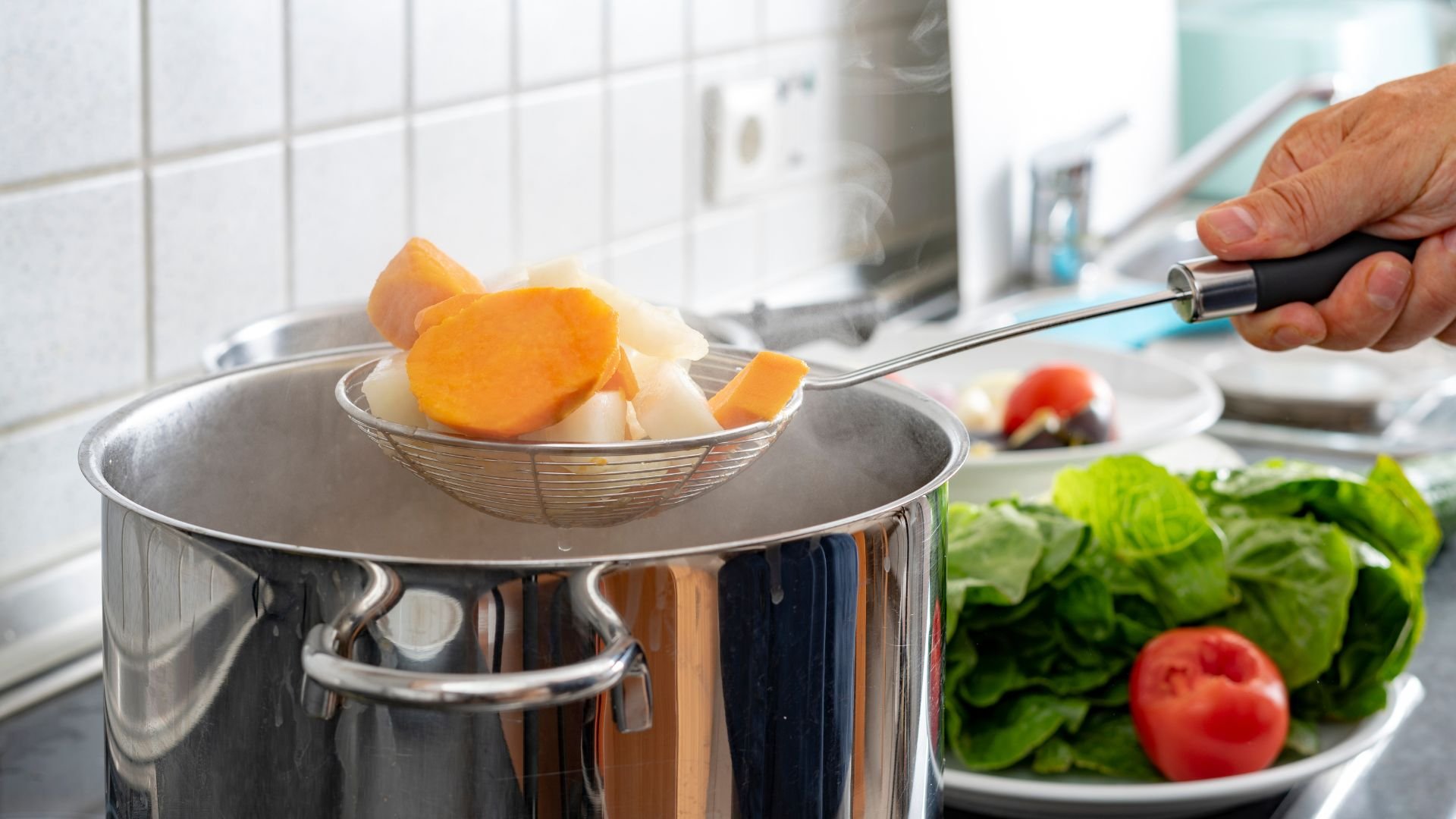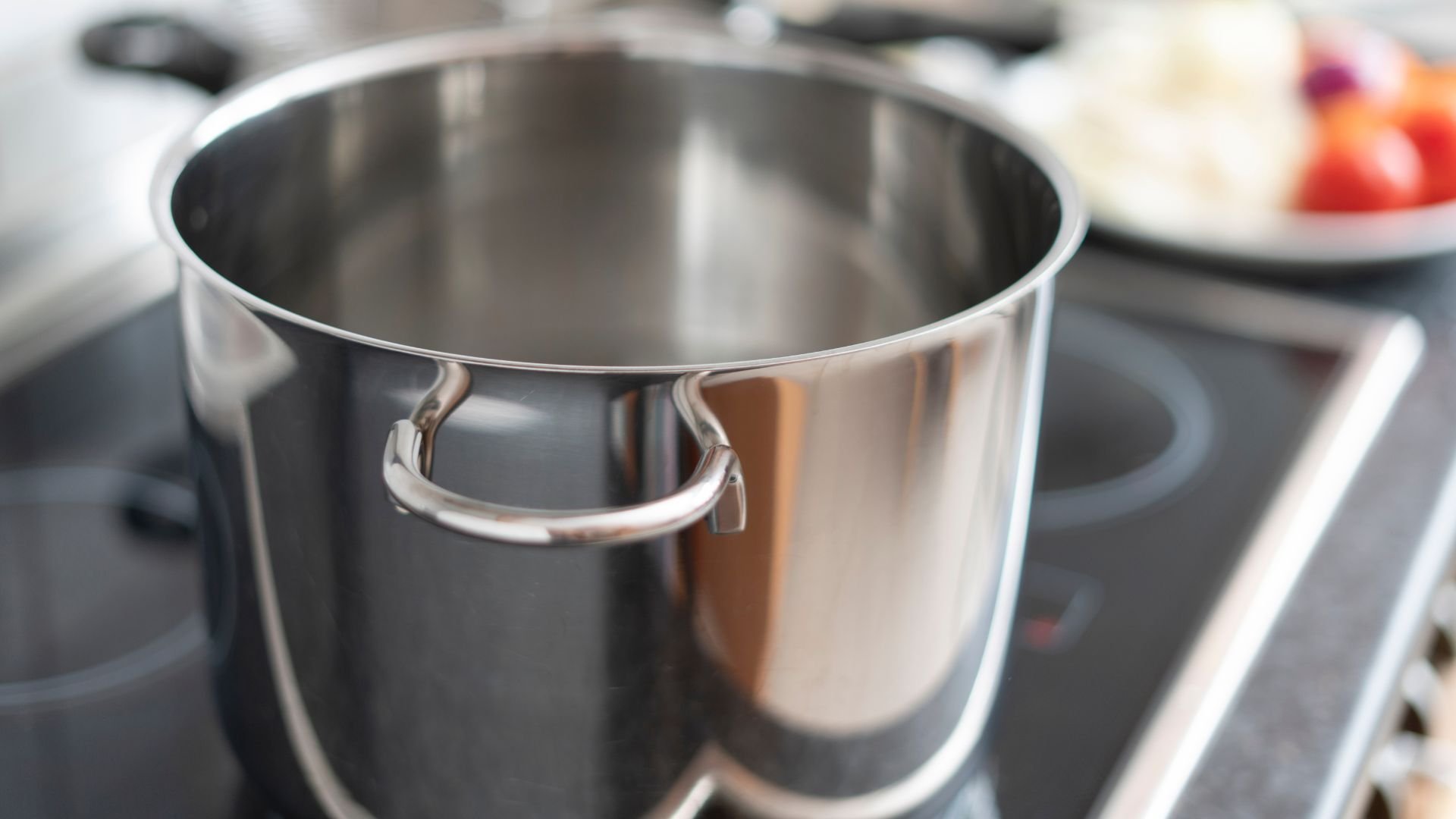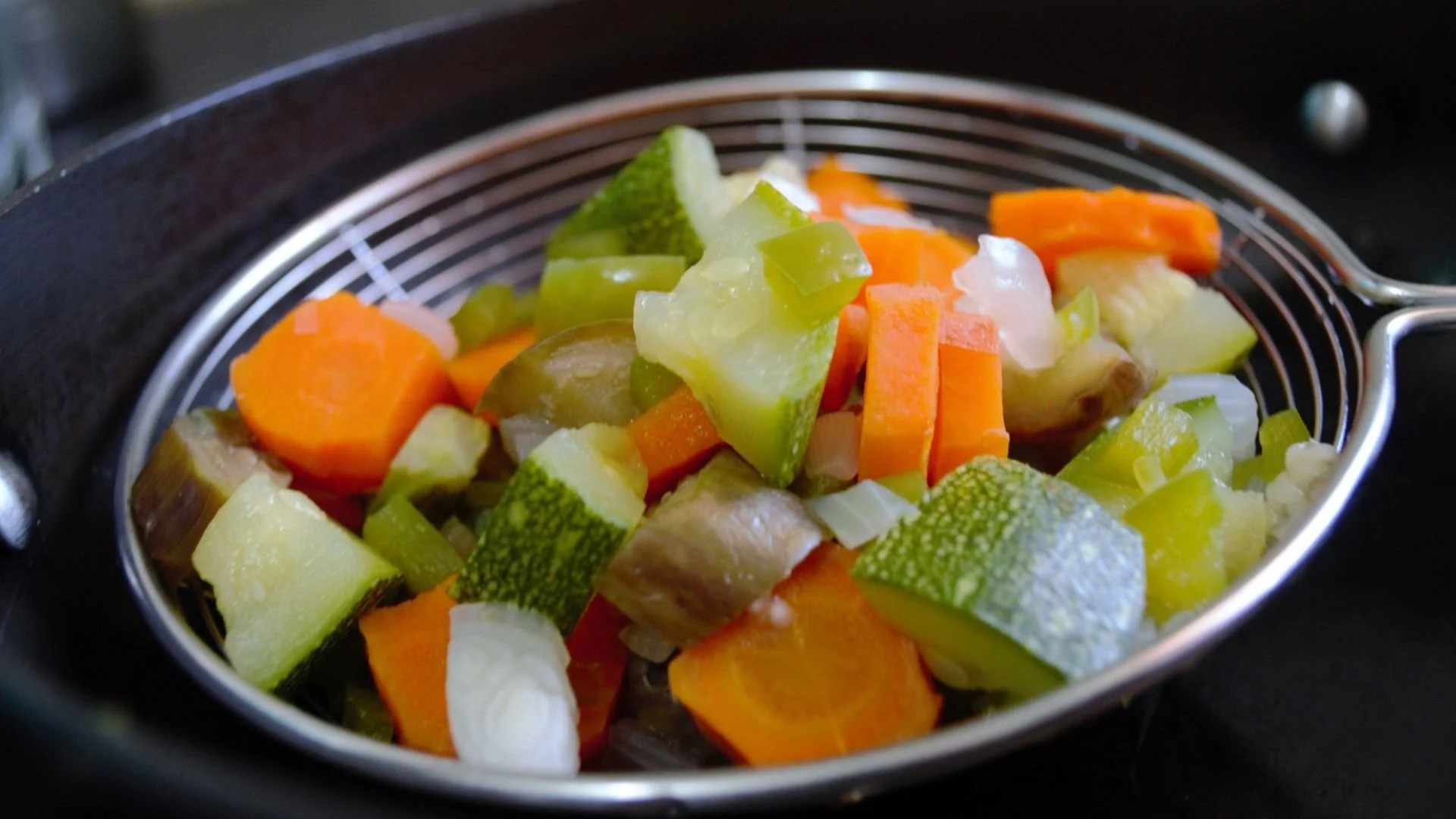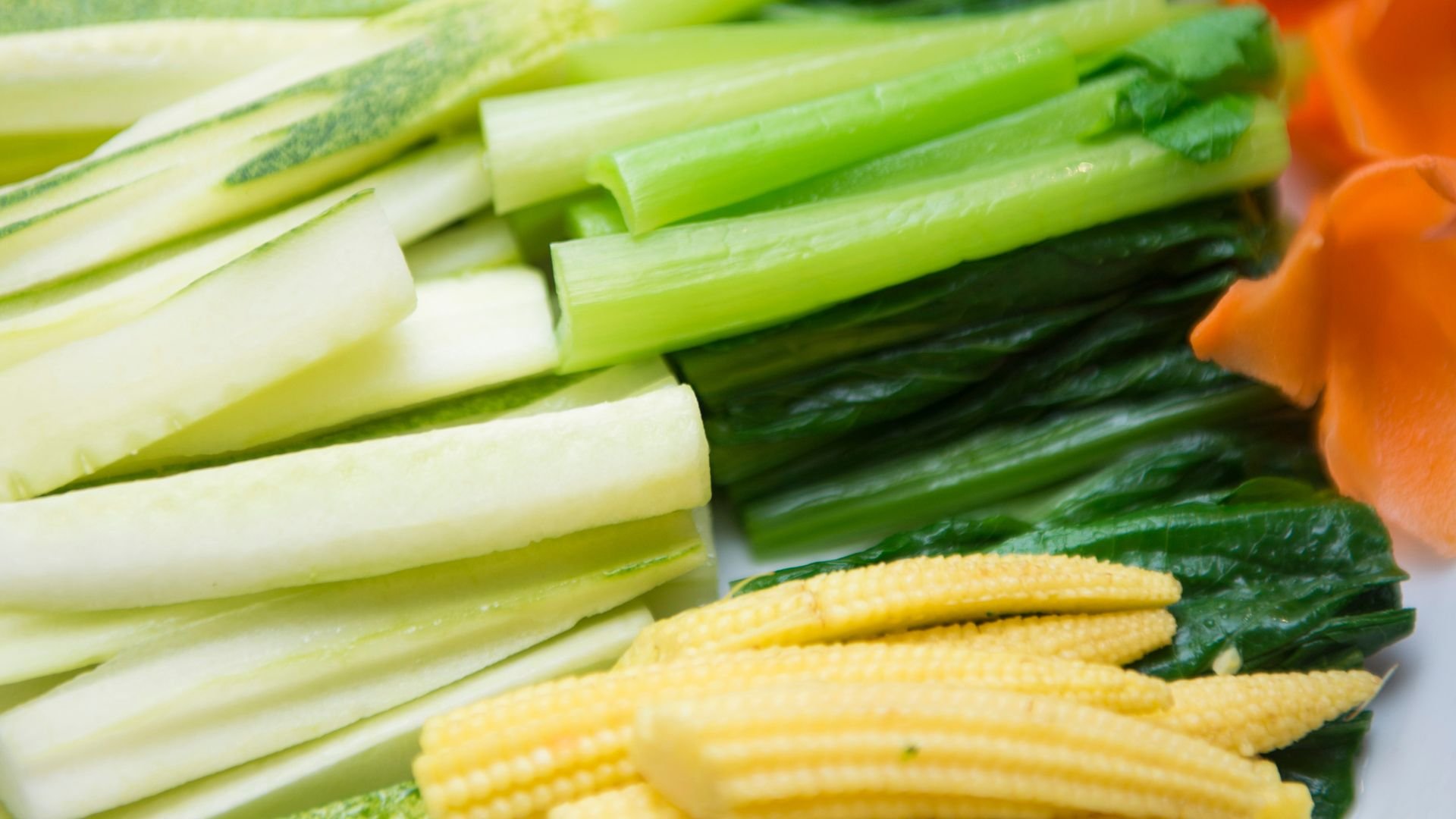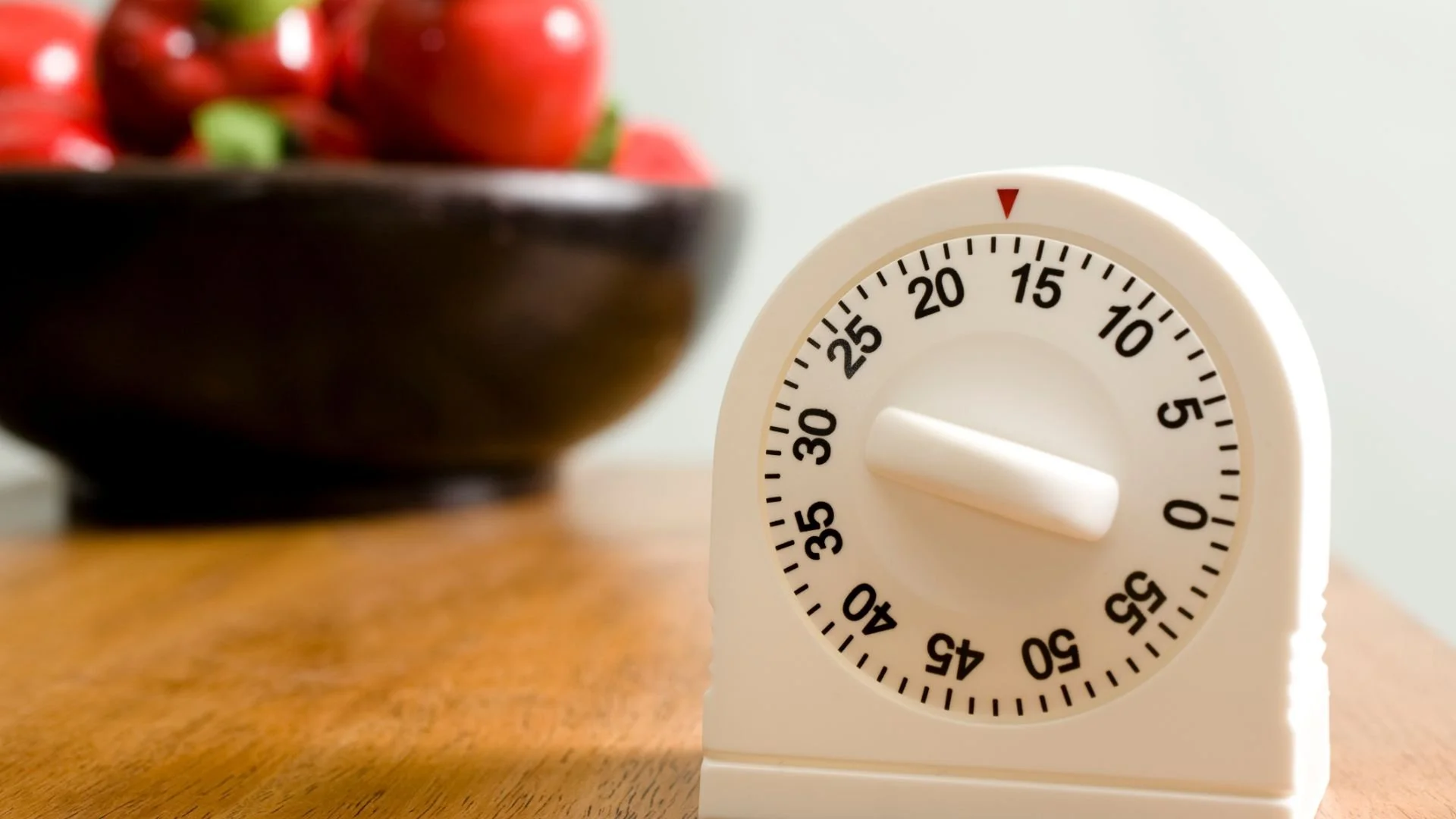How to Properly Blanch Veggies
Discover > Texas Home Cooking > How to Properly Blanch Veggies
Blanching is a cooking process where food, often vegetables or fruits, is scalded in boiling water, removed after a brief, timed interval, and finally plunged into iced water or placed under cold running water to halt the cooking process.
Blanching is an effective way to stop nutrient loss, keep vitamins intact and maintain a vibrant color. It's also helpful if you freeze your produce since blanched vegetables can double or even triple the longevity of your seasonal favorites.
Speaking of drain vegetables, it's a crucial step after blanching to prevent them from becoming overly soggy. Moving on to sweet potatoes and winter squash, these veggies are excellent candidates for blanching, enhancing their flavor and preserving their vibrant colors.
Now in blanching green beans, the process is simple: after cleaning, drop them into boiling water, let them cook for a few minutes, then immediately move them to icy water to stop cooking.
Steam blanching is a variant of blanching, where the veggies are steamed instead of immersed in boiling water. One important note, when you start counting blanching time, is to do so as soon as the vegetables hit the boiling water or steam.
Blanching is a fantastic technique to prepare frozen vegetables, as it aids in preserving nutritional content and vibrant color during freezing.
The best seasonal produce is key to creating fantastic preserved or frozen food. Freezing, Pickling, and Preserving are some of the best ways to make fresh food last.
What is Blanching?
Blanching, also known as parboiling, is a valuable technique used in cooking to prepare vegetables like green beans for freezing or canning. By plunging the vegetables into boiling water and then quickly transferring them to an ice bath, blanching serves as a way to improve texture and preserve colors.
Blanching is a beneficial tool when you're trying to make your vegetables look as vibrant and fresh as possible. While it may sound intimidating or time-consuming at first, blanching doesn't have to be complicated; with a bit of practice, you'll be able to blanch veggies quickly and efficiently.
While beef and pork are popular choices in Texas cuisine, there are also plenty of delicious vegetable dishes to enjoy, thanks to our year-round growing season. From simple sides to hearty main dishes, these recipes showcase the best of Texas produce.
How to Blanch Vegetables?
Blanching vegetables is easy and quick to soften them and keep their colors vibrant.
Step 1: Prepare
To begin blanching any vegetable, fill a large pot with 1 gallon of water per pound of prepared vegetables. Ensure the pot contains enough water to cover all the vegetables.
Step 2: Boil
To blanch vegetables, bring a pot of water to a rolling boil over high heat before dropping the produce.
Step 3: Cook
Once the water is boiling, carefully add the desired vegetable type into the pot and let it continue cooking for a designated amount of time. Generally speaking, most vegetables need only boil for 1-5 minutes to reach perfection with their color and texture.
Once you notice that the vegetable is brightening in color and its texture is changing, it's usually near the point of being done; take off the heat immediately at this point, or else you risk over-cooking or wilting your vegetables.
Step 4: Ice Bath
As soon as they are done cooking, immediately plunge them into an ice bath. The veggies should remain in the ice water for at least the same time they were boiled, or they may be undercooked. After cooling down, remove from the ice bath and place on a kitchen towel to dry off any excess moisture before storing in an airtight container or freezing for use at another time.
What is the Importance of Blanching Vegetables?
Blanching is a crucial cooking method used quickly and safely to cook vegetables. It involves physically immersing the vegetable in boiling water for a brief time, then cooling it in cold water or an ice bath afterward. Using this cooking method, you can significantly improve the quality of your vegetables. Here are the main reasons why:
With a simple blanching process, you can effortlessly peel the skin from fruits and vegetables.
By halting pesky natural enzymes that otherwise would cause a decrease in the quality of flavor, texture, and color over time – freezing can become an easy way to preserve peak perfection.
Blanching is a great way to refresh the surfaces of fruits and vegetables, scrubbing away grime and reducing unwanted bitterness. This process produces an extra layer of cleanliness for your favorite dishes!
Try blanching your longer-cooking vegetables before grilling to create a perfectly balanced meal. This simple step can add flavor and texture to dishes featuring quicker-cooking produce and meat.
Tips for Blanching Any Vegetable
Blanching is the way to go if you want to enjoy your vegetables without sacrificing flavor and texture. To ensure a safe and successful blanching experience, keep a few tips in mind:
Use fresh-picked vegetables that are free of dirt or any foreign material.
Cook in batches according to one type of vegetable per pot.
Putting salt in your water locks in flavor and retains natural sugar and nutrients within the vegetable.
Cut all vegetables into similar sizes and shapes, so they cook evenly
Monitor time, as this will affect the intensity of color and crispness.
Remove vegetables from the boiling water before they start to fall apart.
The simplest way to avoid foodborne illness is to eat your cooked produce. However, you can take several simple steps to enjoy your uncooked fruits and veggies safely.
Blanching Times for Common Vegetables
Blanching, a food preparation technique where vegetables are briefly cooked in boiling water and then cooled rapidly, is becoming increasingly popular with home cooks and professional chefs. Not all vegetables benefit from this process - some can be cooked without blanching and retain their texture and flavor.
However, many vegetables require blanching to ensure the right texture and taste. The most common veggies that should be blanched include broccoli (how long does broccoli last?), carrots, green beans, potatoes, spinach, and asparagus (What wine goes well with asparagus?); these vegetables take on a new level of deliciousness when blanched correctly. Unfortunately, blanching is a complex and time-consuming process. Still, it's pretty simple - follow the instructions carefully, and you'll have perfectly cooked veggies each time!
Artichoke Hearts: 6 minutes
Asparagus: 2 - 4 minutes, depending on the weight
Broccoli Flowers: 2 minutes
Brussels Sprouts (how long do brussels sprouts last?): 3 - 5 minutes
Cauliflower: 3 minutes
Green Beans: 3 minutes
Kohlrabi: 1 minute
Leafy Greens: 1 - 2 minutes
Pea in the pod: 2 - 3 minutes
Shelled Peas: 2 minutes
Squash: 2 minutes
Discover local Texas food shops and farmers' markets where you can buy organic vegetables at great prices.
Conclusion
Texas is a produce paradise and provides plenty of opportunities for cooks to whip up something healthy, delicious, and seasonal. With so many options available, ensuring your vegetables stay as wholesome and vibrant as possible is essential.
Blanching is a simple yet effective cooking technique that helps retain vitamins and minerals while softening vegetables to the perfect texture. It only takes a few minutes to blanch vegetables in boiling water.
Then, immediately plunge them into an ice-cold bath – the result will be vibrant colors, crunchy texture, and maximum nutrition! So don't forget to use this beneficial technique when preparing your favorite Texas seasonal produce.


